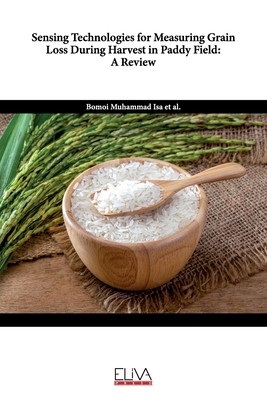
- We will send in 10–14 business days.
- Author: Nazmi Mat Nawi
- Publisher: Eliva Press
- ISBN-10: 1636486487
- ISBN-13: 9781636486482
- Format: 15.2 x 22.9 x 0.3 cm, softcover
- Language: English
- SAVE -10% with code: EXTRA
Sensing Technologies for Measuring Grain Loss During Harvest in Paddy Field (e-book) (used book) | bookbook.eu
Reviews
Description
A combine harvester has been widely employed for harvesting paddy in Malaysia. However, it is one of the most challenging machines to operate when harvesting grain crops. Improper handling of a combine harvester can lead to a significant amount of grain loss. Any losses during the harvesting process would result in less income for the farmers. Grain loss sensing technology is automated, remote, and prospective. It can help reduce grain losses by increasing harvesting precision, reliability, and productivity. Monitoring and generating real-time sensor data can provide effective combine harvester performance and information that will aid in analyzing and optimizing the harvesting process. Thus, this paper presents an overview of the conventional methods of grain loss measurements, the factors that contribute to grain losses, and further reviews the development and operation of sensor components for monitoring grain loss during harvest. The potential and limitations of the present grain loss monitoring systems used in combine harvesting operations are also critically analyzed. Several strategies for the adoption of the technology in Malaysia are also highlighted. The use of this technology in future harvesting methods is promising as it could lead to an increase in production, yield, and self-sufficiency to meet the increasing demand for food globally.
EXTRA 10 % discount with code: EXTRA
The promotion ends in 19d.13:53:08
The discount code is valid when purchasing from 10 €. Discounts do not stack.
- Author: Nazmi Mat Nawi
- Publisher: Eliva Press
- ISBN-10: 1636486487
- ISBN-13: 9781636486482
- Format: 15.2 x 22.9 x 0.3 cm, softcover
- Language: English English
A combine harvester has been widely employed for harvesting paddy in Malaysia. However, it is one of the most challenging machines to operate when harvesting grain crops. Improper handling of a combine harvester can lead to a significant amount of grain loss. Any losses during the harvesting process would result in less income for the farmers. Grain loss sensing technology is automated, remote, and prospective. It can help reduce grain losses by increasing harvesting precision, reliability, and productivity. Monitoring and generating real-time sensor data can provide effective combine harvester performance and information that will aid in analyzing and optimizing the harvesting process. Thus, this paper presents an overview of the conventional methods of grain loss measurements, the factors that contribute to grain losses, and further reviews the development and operation of sensor components for monitoring grain loss during harvest. The potential and limitations of the present grain loss monitoring systems used in combine harvesting operations are also critically analyzed. Several strategies for the adoption of the technology in Malaysia are also highlighted. The use of this technology in future harvesting methods is promising as it could lead to an increase in production, yield, and self-sufficiency to meet the increasing demand for food globally.


Reviews